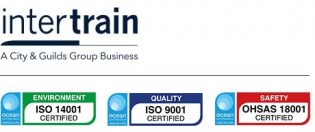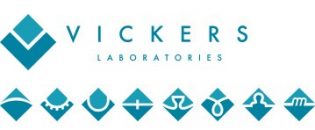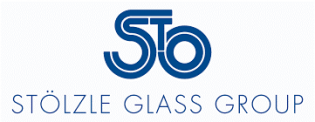Where there is clear gender bias in an organisation, talented women will often be overlooked for promotions and discouraged from applying for leadership roles. This can lead to disengagement, low morale, and employee attrition. Ambitious and high-performing women will leave the organisation for better opportunities, leading to male-dominated, homogenous teams.
Homogenous leadership teams often lack the diverse perspectives and decision-making styles that enhance problem-solving, spark innovation, and improve overall business performance.
Understanding and recognising gender bias is the first step towards minimising it and making your recruitment process more inclusive.
Understanding and recognising gender bias
Studies have shown that identical CVs and job applications receive different ratings depending on whether the applicant’s name indicates a man or woman. This clearly demonstrates that gender bias exists, and it’s important for leaders to acknowledge that existence.
Recognising gender bias – your own and that of others – will help you improve your recruitment and the diversity of your team.
Role stereotypes: Stereotypes still exist around what’s considered “men’s work” and “women’s work,” which often leads to gender bias language in job descriptions. This can discourage women from applying.
Some hiring managers also underestimate the technical abilities of women or make assumptions about their leadership style. For example, they might ask a male candidate about his strategic vision, while asking a female candidate about her people skills and team fit.
Implicit bias: There are also assumptions and stereotypes around leadership traits, such as assertiveness, decisiveness and confidence. These traits are viewed as desirable leadership traits, but they are also traits that are typically associated with men, whereas women are often stereotyped as gentle and nurturing.
To overcome this bias, we need to change our assumptions about what makes a good leader. Assertiveness and decisiveness are good traits, but so are empathy, emotional intelligence, and critical thinking.
In addition, we need to stop using gender stereotypes. Women can be just as assertive as men, just as men can be gentle and nurturing.
Double standards: Not only do we associate certain traits with men, but they are viewed as being positive when they are attributed to men. On the other hand, a woman who is confident, decisive and assertive will often be viewed as bossy, arrogant, intimidating and even unlikeable.
This often puts women in a no-win situation. If they are too assertive, they can be seen as abrasive or overbearing. If they are too reserved, they are seen as too soft or lacking leadership presence.
It’s important to hold all leaders to the same standard and let go of societal expectations about how women “should” behave.
Affinity bias: Hiring managers often feel a greater connection with candidates that are similar to them or candidates that share similar traits. This can lead to male hiring managers favouring male candidates with similar leadership styles to them, resulting in a homogenous leadership team and a lack of cognitive diversity.
This can be avoided by ensuring diverse recruitment panels made up of different genders, backgrounds, personality types and leadership styles. Consider the makeup of your existing leadership team and determine which skills and traits are lacking.
Assumptions around motherhood: Too many hiring managers favour men over women based on assumptions around motherhood. A man is seen as less of a risk because they won’t get pregnant and require maternity leave. In addition, childcare is still seen as a woman’s responsibility, so mothers and expectant mothers are often discriminated against because the assumption is they will be less committed to their career.
Making incorrect assumptions about a woman often gets in the way of good hiring decisions. Many women cannot have children and many don’t want children. Plenty of mothers have partners who are happy to take on all childcare responsibilities. Plus, many, many women manage to start and raise a family while leading teams and carrying out their work to an exceptional standard.
Basing hiring decisions on what you think a woman might do or need in the future could mean missing out on the best candidate for the role. You could also be breaching the UK’s Equality Act 2010, which prohibits discrimination based on nine protected characteristics (including sex, marital status and pregnancy).
Minimising bias in recruitment processes
While it might not be possible to remove gender bias completely, there are some actions you can take to minimise the impact it has on your hiring decisions.
Use inclusive job ads: Use gender-neutral language and avoid terms such as salesman, tradesman or hostess. Highlight inclusive values and focus on abilities rather than traits that can perpetuate stereotypes (such as assertive or nurturing).
Consider blind recruitment: Remove names from CVs and applications before reviewing them to remove bias at the screening stage. Use software to scan and redact names and pronouns.
Provide training to hiring managers: Give hiring managers training around unconscious bias so they are able to address it. Teach them to evaluate candidates strictly on skills, achievements, and qualifications.
Ensure diverse interview panels: Where possible, ensure interview panels are made up of people of different genders, personality types and leadership styles. Panel diversity shows a commitment to inclusion, making candidates of all backgrounds feel welcome.
Standardise interview questions: Use the same set of interview questions for all candidates and use a consistent rating scale rather than making subjective judgements.
Make leadership roles flexible: Where possible, allow for flexible working schedules and remote working options. This can help you attract candidates who have caring responsibilities, disabilities, or religious commitments, which can help you improve diversity.
Track applicant demographics: Keep track of applicants at every stage of the process. How many women are applying for roles, how many are taken through to interview stage, and how many are hired into leadership roles? This will help you assess where the issues are in your recruitment process so you can address them.
Developing your leaders with Alternative Partnership
Alternative Partnership offers a range of support for leaders of any gender and any level of experience.
As well as delivering leadership coaching ourselves, we also deliver ILM accredited Coaching and Mentoring training programmes. Not only do learners improve their skills and knowledge, they also gain a nationally recognised, formal qualification.
Having qualified coaches and mentors within your organisation will help you develop future leaders and attract better candidates to leadership roles.
As well as Coaching and Mentoring qualifications, we also offer ILM-accredited Leadership and Management training programmes.
Find out more about our current ILM courses here or get in touch to discuss how our services could benefit you.












